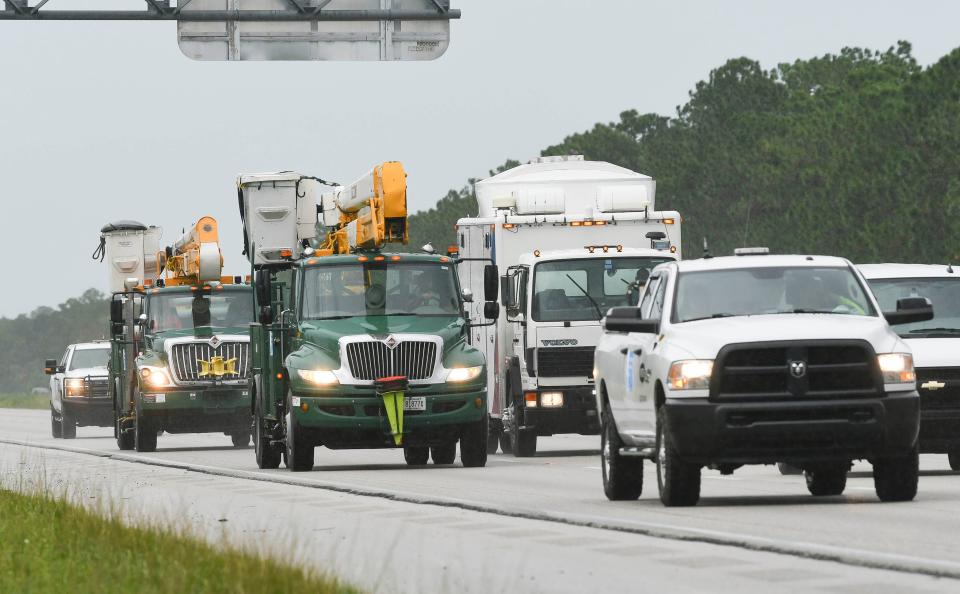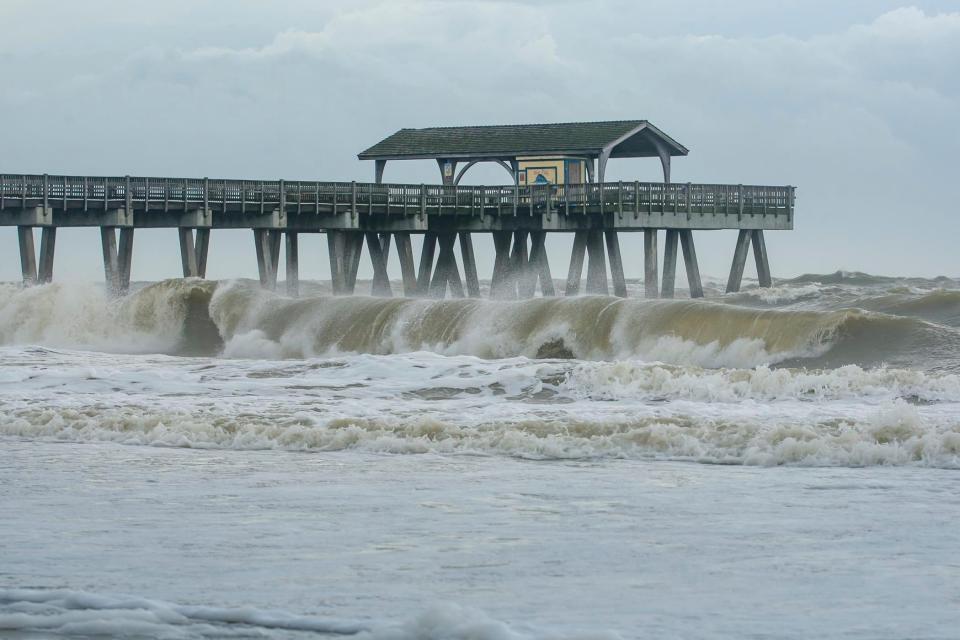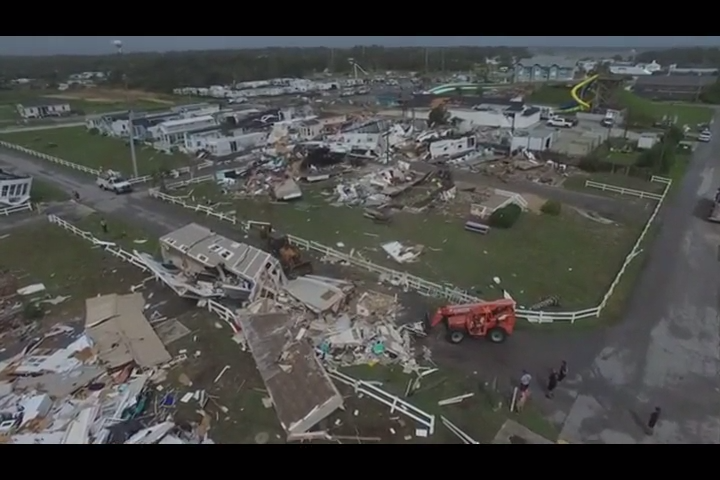How will Hurricane Dorian affect your state? Here's a look at the fury facing communities
Hurricanes often leave their biggest marks on one or at most two states, as was the case with Harvey and Texas two years ago.
Dorian is more egalitarian.
After ravaging the Bahamas with 185-mph winds and wreaking unprecedented destruction on the islands, the storm barely grazed Florida — causing power outages but no major damage — before heading north and taking aim at other states on the East Coast.
Dorian simmered down from a Category 3 to a Category 2 hurricane as it left Georgia and made its way to South Carolina by Thursday morning, but remained a powerful force and carried lots of rain. Dorian's center was brushing the coast of North Carolina at 11 p.m. EST, while Virginia and parts of the Northeast may feel its effects Friday and Saturday.
Here's a look at Dorian's path and the danger that may still lie ahead.
Is Florida in the clear?
Yes. After worrying for the better part of a week about taking a direct hit, Floridians can breathe easy — at least until the next hurricane starts barreling their way.

Dorian brought wind and heavy rains at times, but minimal damage. The Florida Division of Emergency Management has now moved on to warning residents about proper cleanup procedures, staying away from downed power lines and avoiding contaminated water.
“To say we dodged a bullet for the storm would be an understatement,'' Volusia County Manager George Recktenwald said. "Obviously, we dodged a missile.”
Still, three deaths in the state have been attributed to the hurricane, all of them involving men who were getting ready for the storm.
Is Dorian off Georgians' minds?
Largely, after Gov. Brian Kemp lifted all mandatory evacuation orders by 9:30 a.m. ET on Thursday. Six counties east of I-95 had been under that order.

The biggest impact from Dorian was felt in Georgia's barrier islands, which experienced flash flooding and storm surge from 3-6 feet, high enough to be considered life-threatening.
For the most part, though, Georgia was spared. Several thousand customers were still without power by midday, but no major damage had been reported.
.@GADeptofTrans has inspected and cleared the US-17 Savannah River Bridge for public use. Thank you to the crews for working hard after #Dorian to check our roads and bridges for safety. Greatly appreciated! #gapol pic.twitter.com/GZn3lxAJYf
— Governor Brian P. Kemp (@GovKemp) September 5, 2019
What's happening in South Carolina?
In its 5 p.m. ET advisory, the National Hurricane Center said Dorian was about 45 miles south of Myrtle Beach, part of the South Carolina coast getting pounded by sustained winds up to 105 mph. Approximately 830,000 people were under mandatory evacuation orders.
As of 5:20 p.m. ET, Gov. Henry McMaster had lifted those orders for three counties but left them in place for five others, saying that Dorian remains “a very dangerous storm and it’s still impossible to predict where it will go.”
As if the hurricane threat weren't concerning enough, there have been reports of several tornadoes spawning off the storm and hitting land.
The weather phenomenons left behind a trail of flipped trailers, roofs torn away, flooded streets and downed trees and power lines. Still, the damage was light in comparison to the devastation Dorian caused in the Bahamas.
More than 200,000 homes and businesses were without power, and the storm surge along the coast is considered a significant threat to life and property, rising as high as 7 feet. That threat is expected to continue for the next 36 hours.
What awaits North Carolina?
Much of the same as its neighbor to the south, and the state is already feeling the effects of Dorian's force, along with at least five tornadoes generated by the storm. The hurricane was about 35 miles southeast of Wilmington at 11 p.m., the National Hurricane Center said.
Forecasters warned that Dorian could run straight over North Carolina’s Outer Banks – the thin line of islands that stick out from the coast – late Thursday or early Friday.
“We have a long night ahead of us,'' North Carolina Gov. Roy Cooper said. "Everyone needs to stay in a safe place and off the roads until the storm passes.”
The weather service predicts the hurricane will head northeast and drop 6-12 inches of rain on the coastal Carolinas before it starts to slowly weaken.
"On the forecast track, the center of Dorian will continue to move close to the coast of South Carolina this afternoon, and then move near or over the coast of North Carolina tonight and Friday.''
Airports in Wilmington, North Carolina, and Florence, South Carolina, were expected to remain closed until Friday morning.

How about Virginia?
The hurricane center posted a storm surge warning stretching from Little River Inlet, South Carolina, to Poquoson, Virginia. And the tropical storm warning reaches as far north as Sagamore Beach, Massachusetts.
Virginia Beach officials announced mandatory evacuations for the community of Sandbridge, on the Atlantic Coast near the North Carolina border, and encouraged voluntary evacuations in flood-prone areas.
"Water levels could begin to rise well in advance of the arrival of strong winds,'' the weather service said in its outlook for the region. "The surge will be accompanied by large and destructive waves. Surge-related flooding depends on the how close the center of Dorian comes to the coast, and can vary greatly over short distances.''
Contributing: The Associated Press
This article originally appeared on USA TODAY: Hurricane Dorian batters Carolinas and spawns tornadoes

